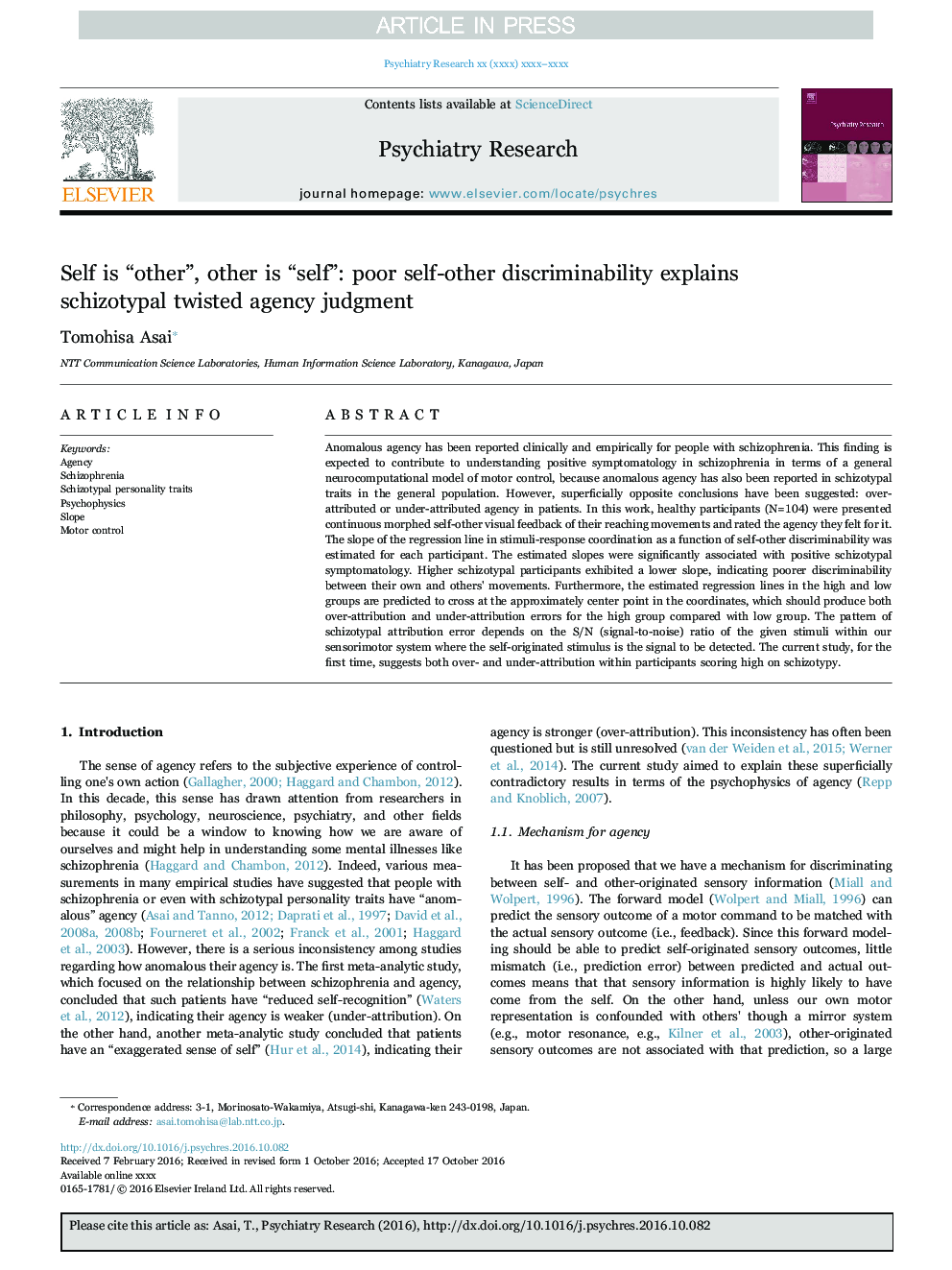| Article ID | Journal | Published Year | Pages | File Type |
|---|---|---|---|---|
| 4933840 | Psychiatry Research | 2016 | 8 Pages |
Abstract
Anomalous agency has been reported clinically and empirically for people with schizophrenia. This finding is expected to contribute to understanding positive symptomatology in schizophrenia in terms of a general neurocomputational model of motor control, because anomalous agency has also been reported in schizotypal traits in the general population. However, superficially opposite conclusions have been suggested: over-attributed or under-attributed agency in patients. In this work, healthy participants (N=104) were presented continuous morphed self-other visual feedback of their reaching movements and rated the agency they felt for it. The slope of the regression line in stimuli-response coordination as a function of self-other discriminability was estimated for each participant. The estimated slopes were significantly associated with positive schizotypal symptomatology. Higher schizotypal participants exhibited a lower slope, indicating poorer discriminability between their own and others' movements. Furthermore, the estimated regression lines in the high and low groups are predicted to cross at the approximately center point in the coordinates, which should produce both over-attribution and under-attribution errors for the high group compared with low group. The pattern of schizotypal attribution error depends on the S/N (signal-to-noise) ratio of the given stimuli within our sensorimotor system where the self-originated stimulus is the signal to be detected. The current study, for the first time, suggests both over- and under-attribution within participants scoring high on schizotypy.
Related Topics
Life Sciences
Neuroscience
Biological Psychiatry
Authors
Tomohisa Asai,
